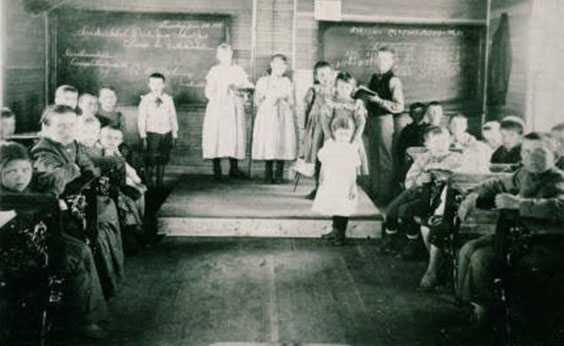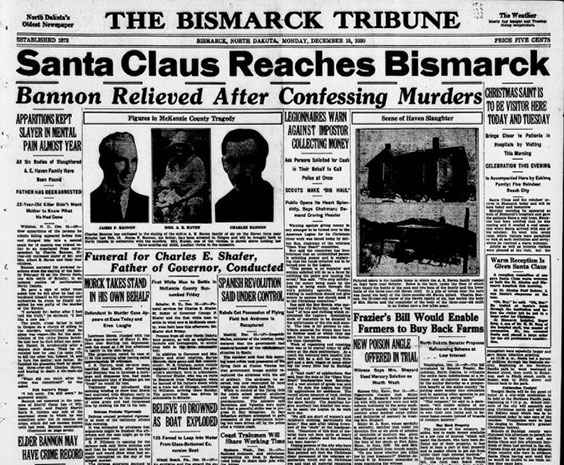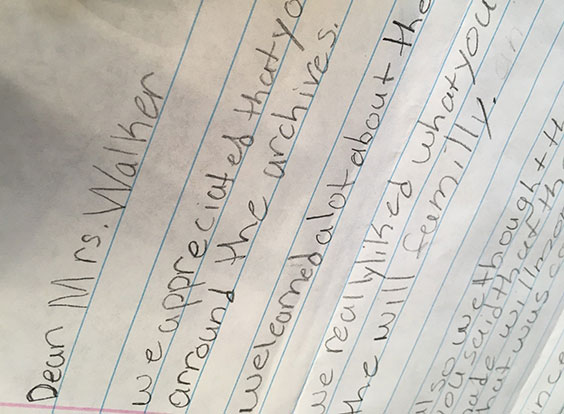I love working in the Archives — but I know that our collections don’t appeal to children and young adults in the traditional way. We don’t have exhibits or spaces made for participation like in our attached State Museum. We are interactive, yes — but we have a research factor that is necessary to discover the gems in our holdings.
So when the younger age demographic wanders into the Archives, it does not surprise me to see them turn and walk back out. Consisting mainly of unique papers and photos, digital files, and books, the Archives aren’t cut out for a clientele of babies or toddlers.
However, we do interact with older children, and lately the number of our younger researchers has increased. Sometimes they wander in with parents doing research. Sometimes they are brought in to listen to an oral history or to assist an older family member with computer use. Sometimes, they are here for an event — like Future Farmers of America, or National History Day — and they find us while waiting to present or participate. Sometimes, they still turn and run, but they also occasionally get interested in what we are and what we have. It’s really exciting to watch this happen.

This image shows a classroom from Pierce County, approximately 1898. Times have changed! SHSND 10844-00108
Many of our younger patrons come during classroom visits. They get a behind-the-scenes tour, learn how to use our resources, and learn how to do research in specific collections. We’ve provided quite a few of these opportunities for high school groups — but also for their younger compatriots. This is so much fun, but so different in how we approach our discussion. Typically, our first approach is to explain what an Archives is and what its purpose is. What do we collect? What don’t we collect? How are we similar to and different from the museum collections?
I’ve given many memorable tours to and helped provide research for younger patrons. One year, I provided a behind-the-scenes tour to a mixed-age group from a one-room school in the western portion of the state. Their ages ranged from about 7 to 12. I had a group of middle school boys who job-shadowed several of us in the Archives. I’ve had various tours with groups of high schoolers — including a group that came in and got a taste of research in the Reading Room, led by one of my own past high school teachers!
Sometimes I show them how to use microfilm and help them learn how to look up big news events (World Wars I and II, September 11, the 1966 blizzard), or help them to look up something of personal importance, such as their own birth announcement or a family marriage announcement.

Seeing something such as this headline from 1930 would certainly be of interest to kids who wonder what Christmas was like when their grandparents were little.
Sometimes I help them get set up with viewing photo images in our Reading Room. Searching by topic is of great interest to them, and they respond positively to viewing a unique, captured moment of the past.
A little more than a year ago, we had multiple groups of fourth graders come to the State Historical Society to do research for school. We met about five times with various teachers and students. They got a tour of the Reading Room and learned how to look up our collections. Then we provided them with some collections that the teachers had requested ahead of time, as well as some general information files we had on various topics of interest that they were researching. They looked at photo collections, manuscript collections, general information files, books, and newspaper clippings on microfilm and online, all related to different topics — including steamboats, the city of Bismarck, and railroads. They selected and photographed or copied items that informed them about this history, which they shared with their class and used for their projects. At the same time, they worked with our Archaeology & Historic Preservation division and visited a local state historic site. While not all of the kids went to all of the locations of interest, they worked jointly on a project that all of the research went toward. It was great to see the kids get into their topics of study. They were so excited about what they found — it did an archivist’s heart good!

A thank you note I was sent after one of our job shadowing experiences. I have it hanging up in my office!
These kids and young adults will grow up to become our future patrons, and it is important that they know where to go for research, and what is available to them. In fact, it may help them in their school work — and it may help them with many other tasks.
We love to see the variation in our researchers and believe strongly in educating future researchers as to the importance of all of our history. If you would like to discuss scheduling a class trip or options for bringing youth to the State Archives, please contact us!

